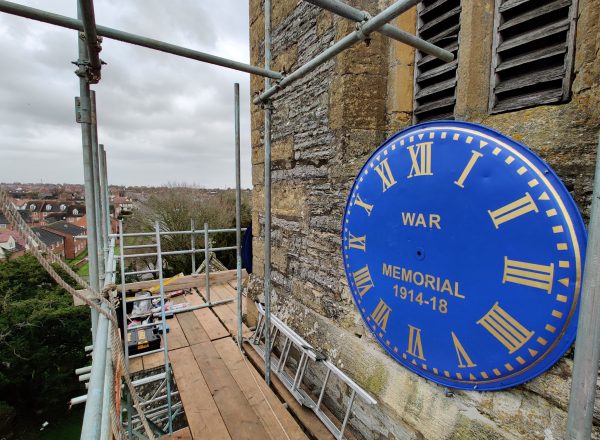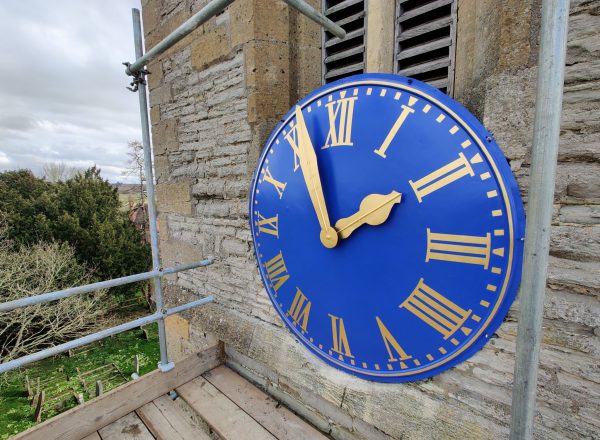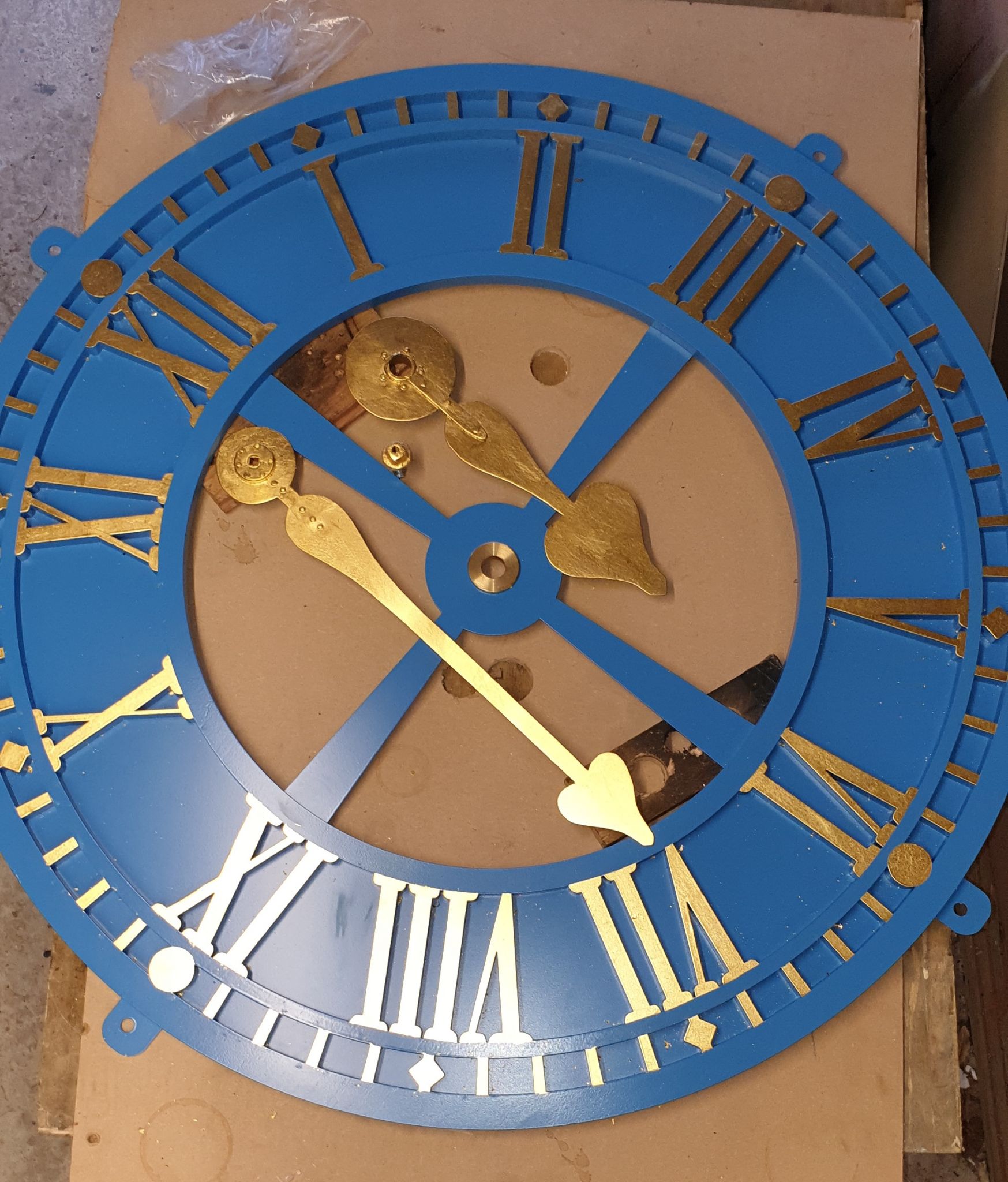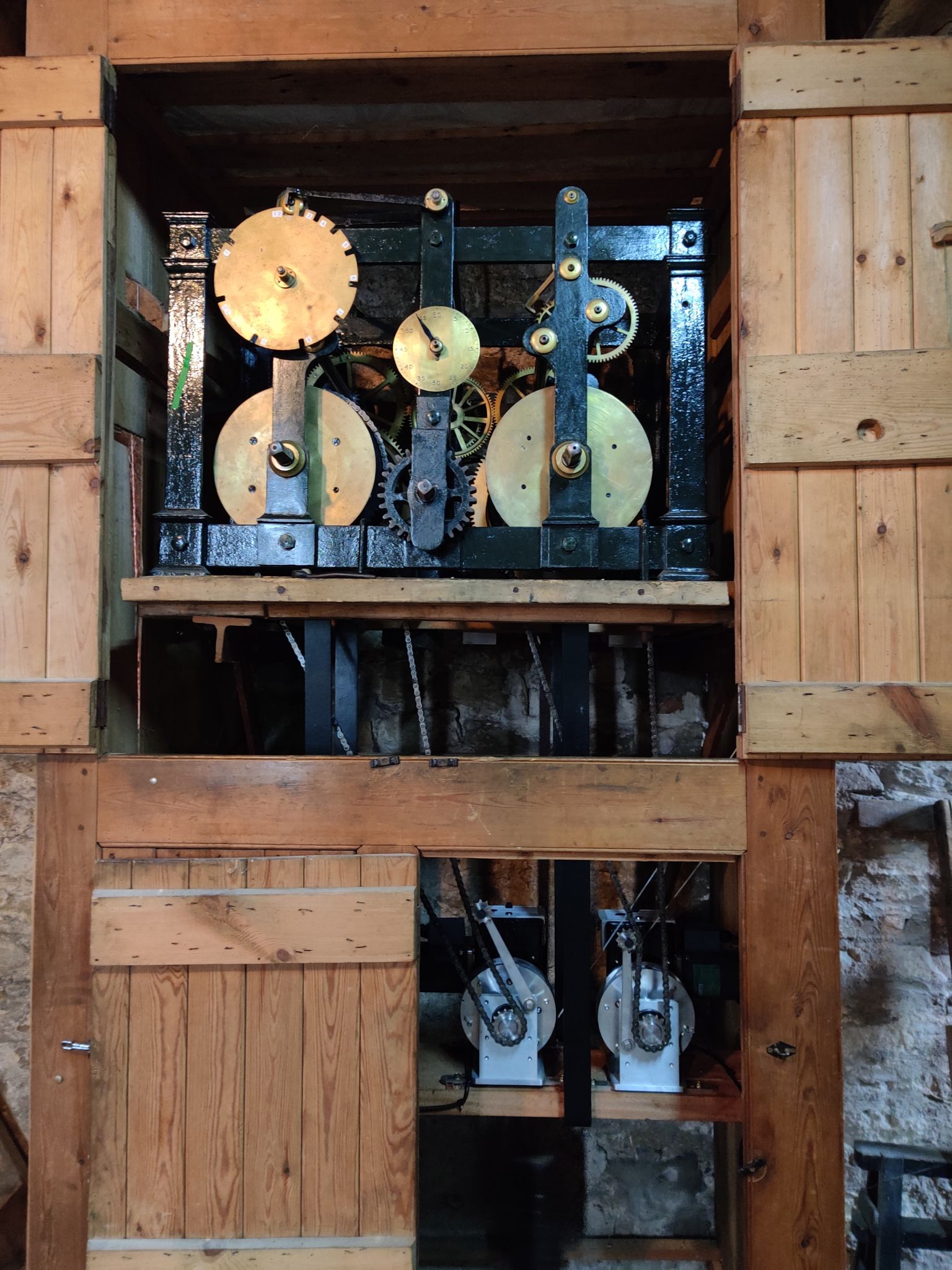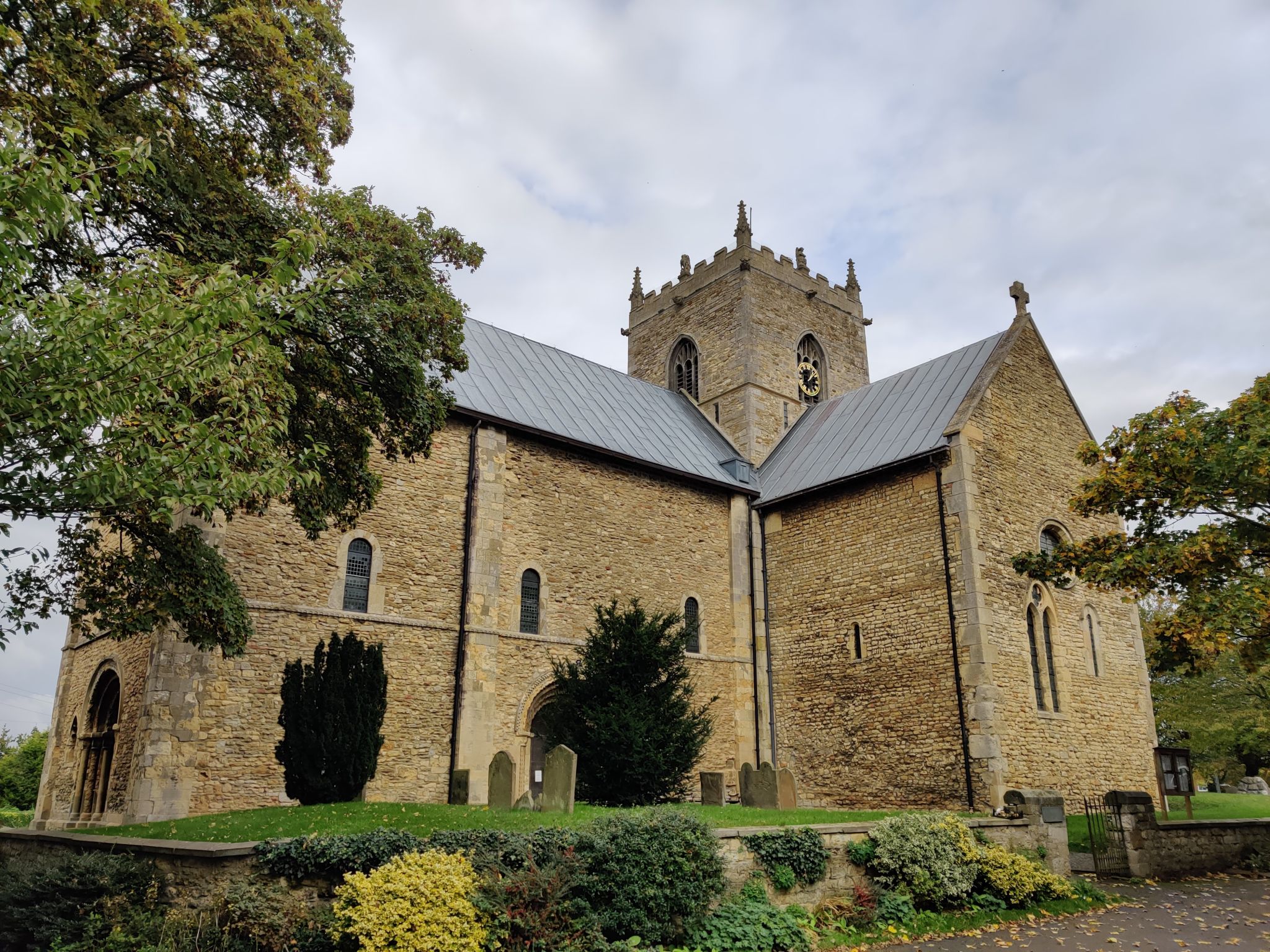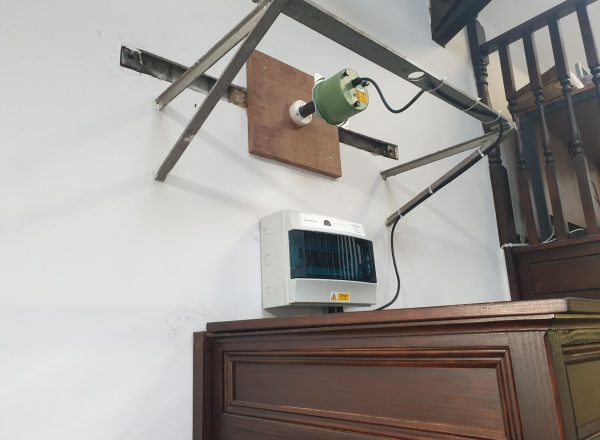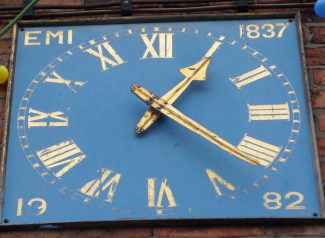
Evesham, St Andrew’s Church
Earlier this year we carried out a dial restoration of the two copper convex dials at St Andrew’s Church Evesham.
The dials were unusual as they were two different sizes, the south dial is a memorial to the first world war.
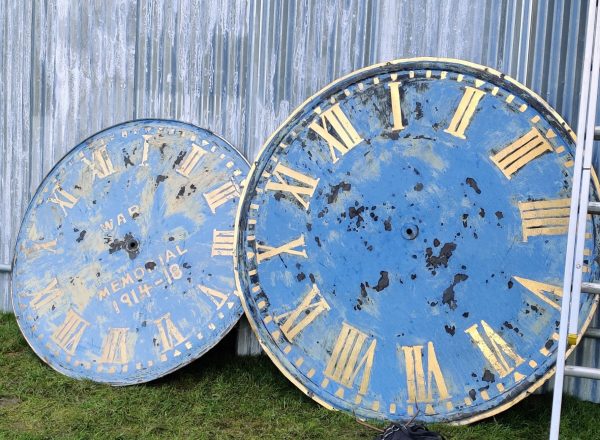
The dials were traced out, so we could replicate the original chapters. they were then chemically cleaned to remove all the old and flaking paintwork.
The dials were then painted the original colour. we then sized and gilded the dial with 23 ½ carat English Gold Leaf.
The dials were once again restored to the tower using new stainless steel fixings.
